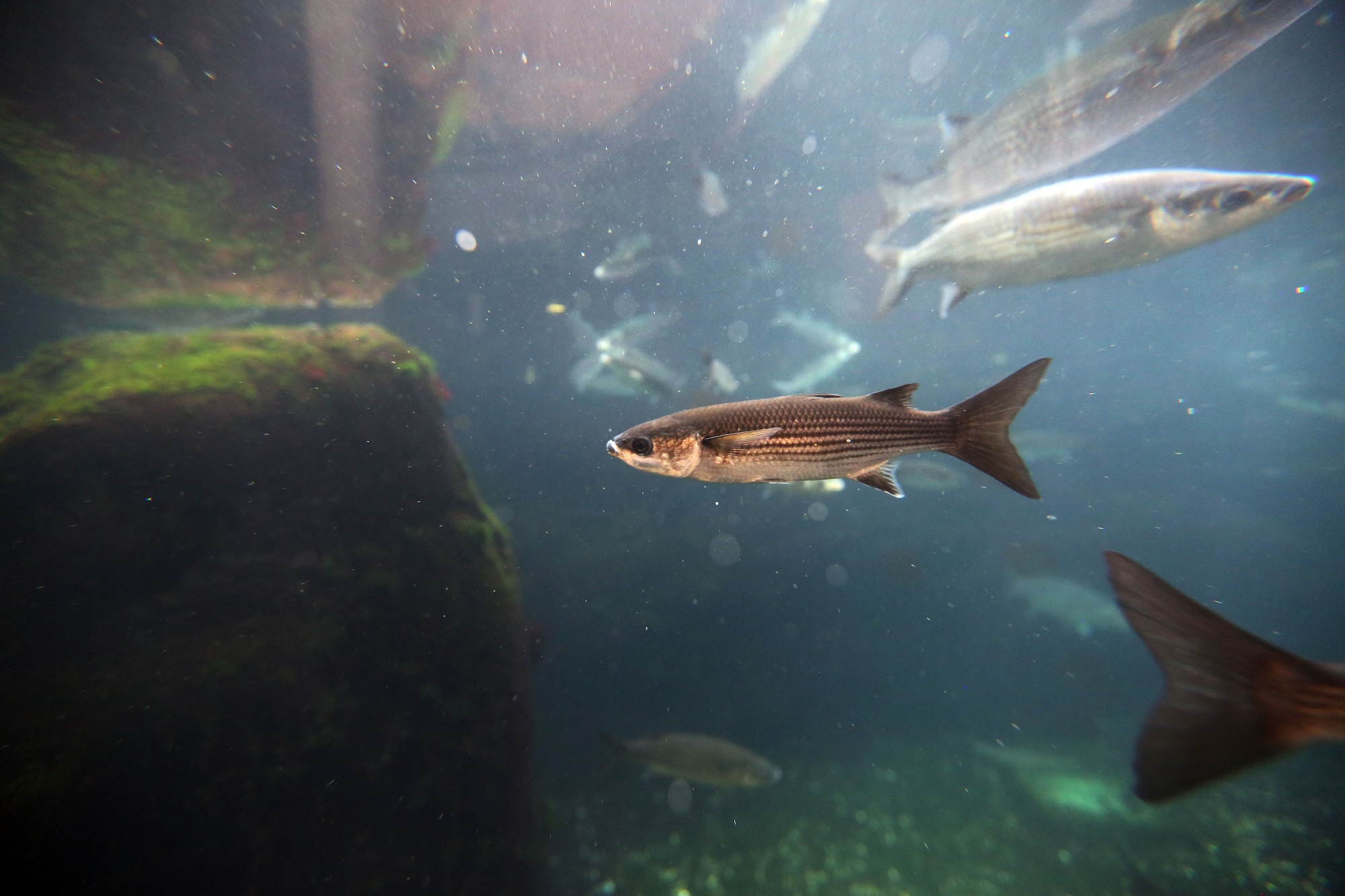
Grey Mullet (Chelon labrosus) is also called the thick-lipped mullet due to their thick upper lip and silvery-grey appearance. Mullet are a common fish found in the waters surrounding the UK, down to Spain, and the Mediterranean Sea and northern Africa. Their fast growth rates make them an important food source for humans and juvenile fish are often collected and farmed.
Mullet migrate south in the autumn and winter where they then spawn. Females can lay up to 2 million eggs, depending on her size. Releasing a large number of eggs ensures the best odds that some of the young will survive to become an adult.
These fish have a colouring known as counter-shading. This is a form of camouflage that is common among sea creatures where the top and bottom halves of their bodies are different colours. The top half is a darker grey colour, which means when viewed by a predator swimming above them, the mullet would blend into the darker waters below. Similarly, when viewed from below, like a predator swimming underneath, the mullet’s light belly would blend in with the bright water above. This would make the mullet much harder to spot giving the fish some protection from predators.
Type
Fish
What do they eat?
Small invertebrates and crustaceans, seaweed and algae
Size
90cm
Water Type
Calm waters, estuaries, marinas and coasts
Where are we?
European waters around the UK and the Mediterranean Sea
